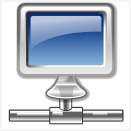
Known Issues:
- Installing and running localized languages is not recommended at this time
- MacBuddy may not run after installation. Rebooting will launch MacBuddy
- Using the 'Open' command may cause longer opening times
- NFS mounted files cannot be accessed
- iSync's plug-in maker requires CFBundleIdentifiers to be unique per plugin to avoid corruption when multiple plug-ins are installed
- Heavy paging may result in zeros being written to the address space
- User cannot copy text from applications launched via SSH
- Disconnecting from your network while connected to servers may hang your machine
- Syncing calendars through iSync does not work at this time
- A system panic may occur with ATI cards while running QuickTime Player with iChat and Preview
- 'Add Printer' dialog appears behind frontmost windows
- QuickLook's full screen mode may not quit in certain situations
- Unable to restore from Time Machine backups created in MacBuddy
- Application Launch Restrictions in Parental Controls not being enforced at this time
- User cannot install the Adobe Suite
- Cannot enable accounts for Windows Sharing
- Finder may quit in certain situations when using the Cmd-Tab keys
- Terminal: Ctrl-Space does not send any data to the shell which may cause issues with the mark in Emacs
- Terminal: Performance with millions of lines of text is currently limited
- Upgrades from the WWDC Developer Seed are not supported
- Upgrades from previous releases are not recommended
Changes in Leopard Since 9A321
- HIToolbox provides new HIRect/Point/Shape-based Window Manager API for resolution independence compatibility
Terminal:
Settings are now stored in Terminal "Profiles" rather than .term files. There are two ways old .term settings are migrated to the new Terminal:
- Automatic import of default .term file and terminal settings at the first launch
- Importing of arbitrary .term files other than your default one
After migrating settings a new Terminal window will open and you should save the window settings as new profiles using Shell->Save Profile
- Tab support
- Terminal now lets you save a multi-window configurations through workspaces which are available through the "Terminal" menu.
QuickLook
- QuickLook APIs have been updated
- quicklookd can be used to test your QuickLook generators. Use "quicklookd -h" to see the list of options.
Thanks to Adrian Fogge for letting us know in this thread.
- Read more...
- 14 comments
- 9,416 views








